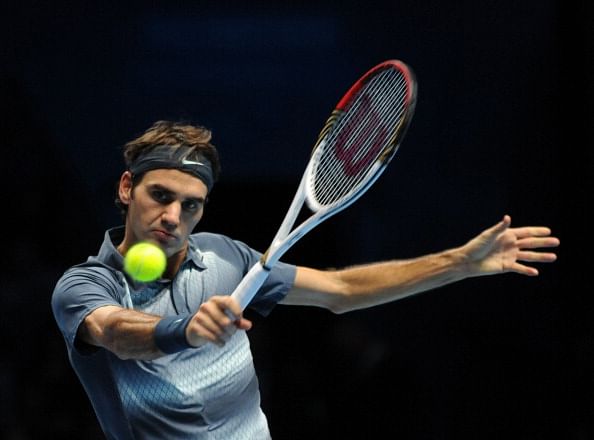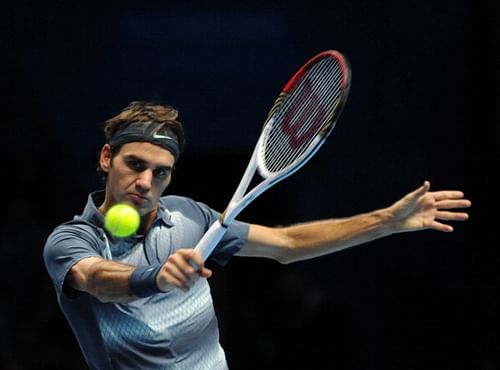
2013 Season review of the self-destructive Roger Federer

Roger Federer
“I kind of self-destructed, which is very disappointing.”
This was what Roger Federer had to say following his shocking straight sets loss to Spain’s Tommy Robredo in the fourth round of US open this year. Surprisingly, the Swiss maestro, who was known for making short work of his opponents, ranked well below him, found himself caught in a tailspin, getting ragged repeatedly by players – some of whom had not even started crawling.
This was one scenario which was least expected for Roger when the 2013 season started, particularly with him performing exceedingly well last year, winning as much as six titles including his seventh Wimbledon. In fact, he finished 2012 as the second best player in the world, not far behind Djokovic in terms of points. So, he stepped into the newyear with loads of expectations, hoping to do even better than the previous season.
Strangely, he skipped his warm up in Doha and chose to begin his campaign in Australia right away. He was quite fabulous last year in Rod Laver Arena throughout the tournament until he was brought to earth by his nemesis Rafael Nadal in the semifinal. This year though, he was caught in a formidable draw thronged by budding youngsters all the way, with the lone exception of Daveydenko who was slated to meet him in the second round.
Bidding to reach his 35th consecutive Grand Slam quarterfinal, he went past his challengers up until the fourth round without dropping even a set. More so, with Nadal opting out of the tournament still recuperating from his injuries – the prospect of him reaching his first final in Australia since 2010 looked very much on the cards.
Ever since his purple patch as a tennis player disappeared in 2007, he had his problems with his consistency, especially when it was about controlling his backhand errors. This problem soon started showing during his quarterfinal match against Jo Wilfred Tsonga, who stretched the four time champion to the limit, exploiting his backhand weakness. Roger was lucky to have survived the Frenchman’s onslaught and reached his 10th semi final in a row in Melbourne.
In the semifinal he was up against Andy Murray to whom he had never lost any of his previous Grand Slam encounters. Though he was a favourite going into that match, he looked totally out of sorts and found himself a set down in no time. Strictly speaking, Federer was hanging on to the contest only with the help of tie-breakers. The fifth set was a one-sided affair with Andy taking it hands down as he sealed his place for the final against the defending champion Novak Djokovic. If anything, the performance of the Swiss in the Australian open indicated two things:
1. That Roger was not turning younger anymore – at least not young enough to play two back to back five setters. (Roger just gave it up in the deciding set and went down without a fight).
2. That even Murray was a threat to Federer in Grand Slams in addition to Djokovic and Nadal. Remember Andy beat him (demolished is the right word) in last year’s Olympics also
The great man though, was the defending champion in the next three tournaments which followed and so was left with too many points to defend. So, he needed to win each of those tournaments to have his points intact. His debacles in Rotterdam, Dubai and the all important Indian Wells proved clearly that the all time leader in Grand Slams was going to have one of the toughest years ahead.
In Rotterdam, his title defence was snapped by Julien Benneteau who was just a couple of months younger to him. The loss against Berdych in the semifinal of Dubai was a vivid indication of him finding a new nemesis. And finally his ignominious fall against Nadal who was just starting to make his mark after a seven month long injury layoff in the Indian Wells quarterfinal was more than enough to emphasise that he was yet to get over the mental block which he had been having against the Spaniard.
His performance was so pathetic that he failed to reach the final of not even one of those three events. Even if his defeat at BNP Paribas Indian Wells was imputed to his back pain, it was obvious that he was beginning to suffer from the effects of old age. Federer himself would rue his decision later on for having played with the physical ailment.
The Swiss did well though by preserving his body for the next 45 days or so having skipped “Masters 1000” in Miami and Monte Carlo, which was, no doubt, a good decision given the way he was playing. Even though he took a reasonable break from tennis to start afresh, the fact that he was about to step onto the red clay courts of Europe did not augur well for him, owing to the unfriendly nature of the surface.